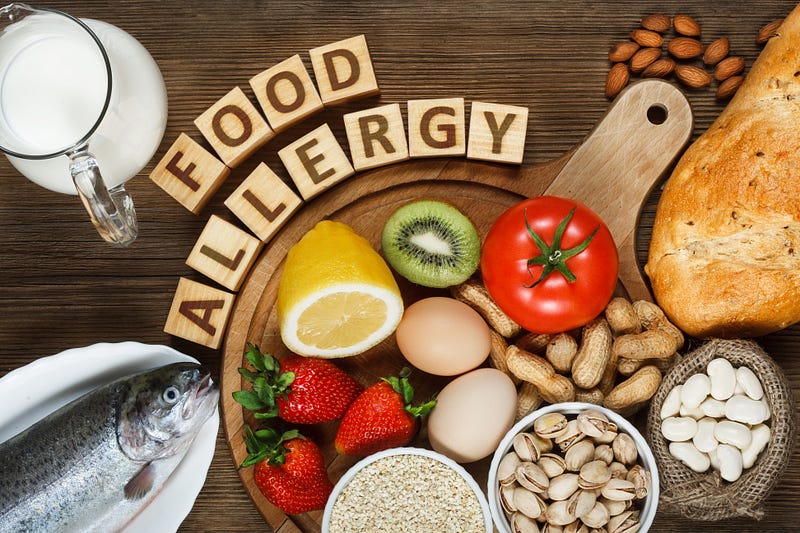Where do food allergies come from? Three theories offer clues
By Christina Curran, Biochemistry, 2023

In today’s world, it seems as though everyone is allergic to something. While a bit of hay fever or a runny nose from spring pollen might be a nuisance, their threat does not hold a candle to that of food allergies, which in the absence of an epinephrine injection can be fatal. This phenomenon isn’t uncommon, either. The American Academy of Allergy, Asthma, and Immunology estimates that around 8 percent of children have some sort of food allergy. This statistic begs the question:
If such a significant portion of the population is impacted by food allergies, what did our ancestors do about it?
The prevalence of food allergies is not a novel concept. The ancient Roman poet Lucretius noted that “what is food to one man is bitter poison to others.” While it is likely that food allergies have been a phenomenon for centuries, they certainly haven’t prevailed in the numbers we see today. Experts have quarreled over the reason for this, but the general consensus seems to boil down to three main possibilities.
The first and most well-known theory concerning the emergence of allergies is called “the hygiene hypothesis.” Dubbed by David Strachan in the 1980s, it posits that early childhood exposure to particular microorganisms protects against allergic diseases by contributing to the development of the immune system. In other words, our environment might be “too clean” for our immune systems to learn to discern between harmful and harmless chemicals early on, so instead there is an immune response to substances that are otherwise innocuous. Supporters of this theory claim that developing nations (such as India) have lower rates of asthma than developed nations (such as the U.S.). They also suggest that allergies were less of a problem for previous generations because their living conditions were worse than those of today. While this argument seems sound, there is no definitive evidence indicating that food allergies are less common in developing areas, as there is a lack of data on food allergy prevalence in those regions.
A second and somewhat related proposal suggests that the advent of modern medicine has led to the rise of allergies. Many doctors recommend that parents wait to feed their children some of the most common allergy-causing foods (nuts, dairy, eggs and shellfish, to name a few), sometimes advising them to wait up to three years. Similar to the hygiene hypothesis, proponents of this theory propose that stalling the implementation of these foods to children’s diets doesn’t give the microbiome enough time to adapt to these harmless substances, which results in the body treating them like invaders.
A third proposal researchers have offered for the allergy uptick links the modern “western” diet to lack of microbial diversity. High fat, high sugar diets (particularly commonplace in the era of fast food) can “dramatically shift gut microbial community membership and function,” stated an article in the journal Nutrients.
Could our poor diets be to blame for this new age of allergies?
Perhaps, but that same article acknowledges that at the present time, “it is unclear… what a ‘healthy diet’ in terms of allergy prevention and management means, and if a healthy diet as we know it (20% protein, 50% carbohydrate, 30% fat) has any relevance in allergy prevention.”
Currently, it is impossible to trace a definitive path to the origin of food allergies. For a long time, food allergies were hard to define, as they shared characteristics with many other common ailments. In today’s world, one major concern is that as these deadly conditions become ever more pervasive, the cost of the life saving “epi-pen” is rising to exorbitant prices. With this essential drug becoming unattainable for some, it is vital that more data be collected to establish strong and definitive connections for the causation of allergies, for many lives depend on it.
Allergology International (2016). DOI: 10.1016/j.alit.2016.08.001
National Academies of Sciences, Engineering, and Medicine (2017) DOI: 10.17226/23658
International Journal of Environmental Research and Public Health (2018). DOI: 10.3390/ijerph15092043
Nutrients (2017). DOI: 10.3390/nu9080850
